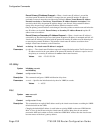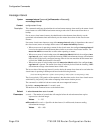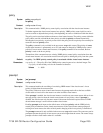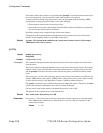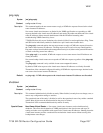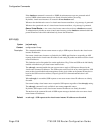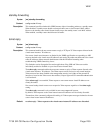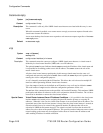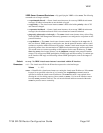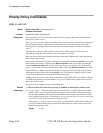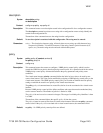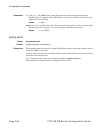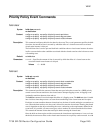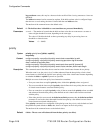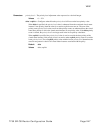Configuration Commands
Page 240 7750 SR OS Router Configuration Guide
traceroute-reply
Syntax [no] traceroute-reply
Context config>router>if>vrrp
Description This command is valid only if the VRRP virtual router instance associated with this entry is a non-
owner.
When this command is enabled, a non-owner master can reply to traceroute requests directed to the
virtual router instance IP addresses.
A non-owner backup virtual router never responds to such traceroute requests regardless of the trace-
route-reply status.
Default no traceroute-reply
vrrp
Syntax vrrp vrid [owner]
no vrrp vrid
Context config>router>interface ip-int-name
Description This command creates the context to configure a VRRP virtual router instance. A virtual router is
defined by its virtual router identifier (VRID) and a set of IP addresses.
The optional owner keyword indicates that the owner controls the IP address of the virtual router and
is responsible for forwarding packets sent to this IP address. The owner assumes the role of the
master virtual router.
All other virtual router instances participating in this message domain must have the same vrid
configured and cannot be configured as owner. Once created, the owner keyword is optional when
entering the vrid for configuration purposes.
A vrid is internally associated with the IP interface. This allows the vrid to be used on multiple IP
interfaces while representing different virtual router instances.
Up to four vrrp vrid nodes can be defined on an IP interface. Any or all may be defined as owner.
The nodal context of vrrp is used to define the configuration parameters for the vrid.
The no form of the command removes the specified vrid from the IP interface. This terminates VRRP
participation and deletes all references to the vrid in conjunction with the IP interface. The vrid does
not need to be shutdown to remove the virtual router instance.
Special Cases Virtual Router Instance Owner IP Address Conditions — It is possible for the virtual router
instance owner to be created prior to assigning the parent IP interface primary or secondary IP
addresses. When this is the case, the virtual router instance is not associated with an IP address. The
operational state of the virtual router instance is down. Once the virtual router instance is created, an
advertise exclude list may be created, listing parent IP interface IP addresses that will not be
advertised in VRRP advertisement messages. The advertise exclude list allows the advertised IP
address list to be a subset of the parent IP addresses. This provides a method where non-owner virtual
routers backing up the owner may be configured with a subset of virtual router IP addresses and
while enabling IP address list match verification.



